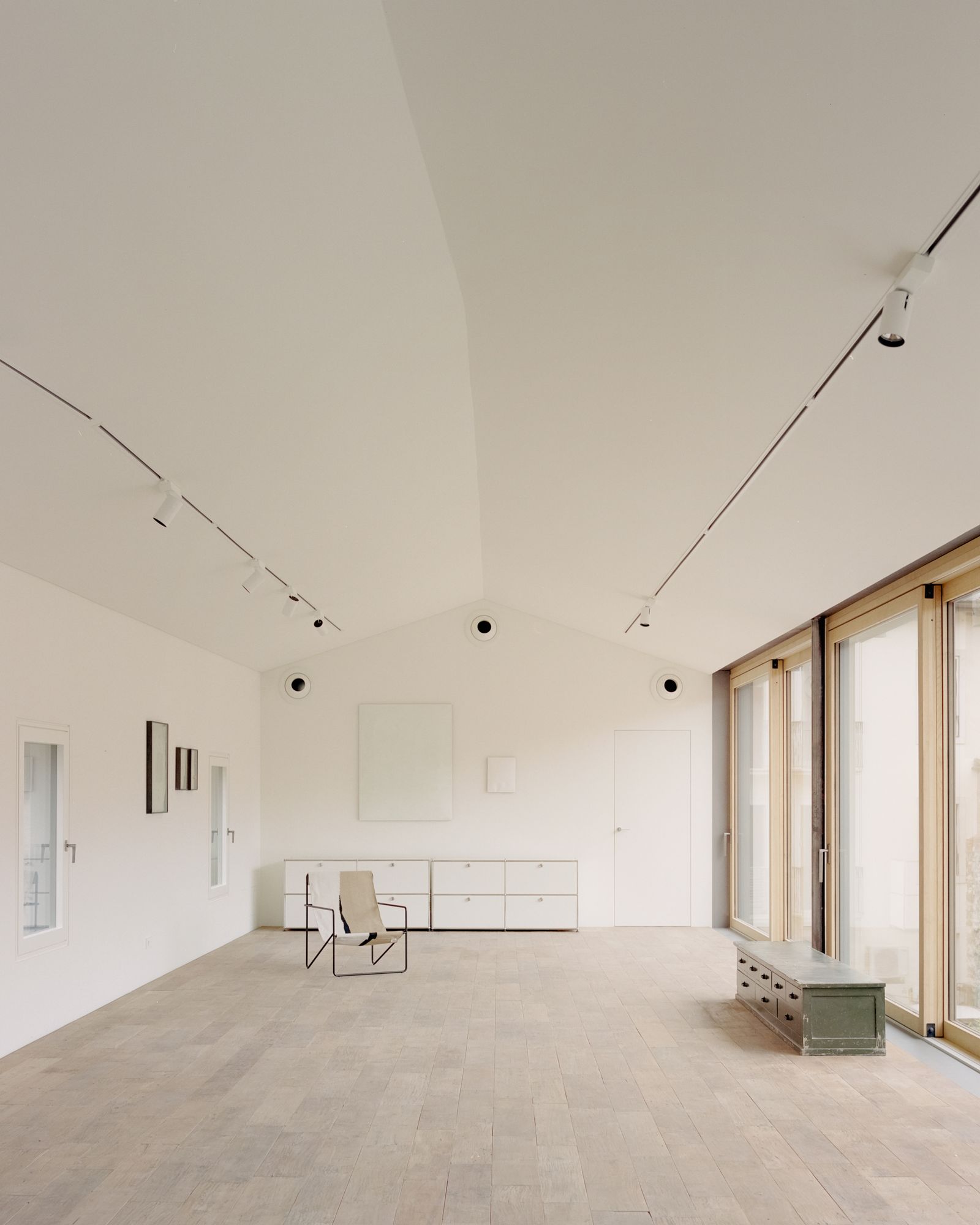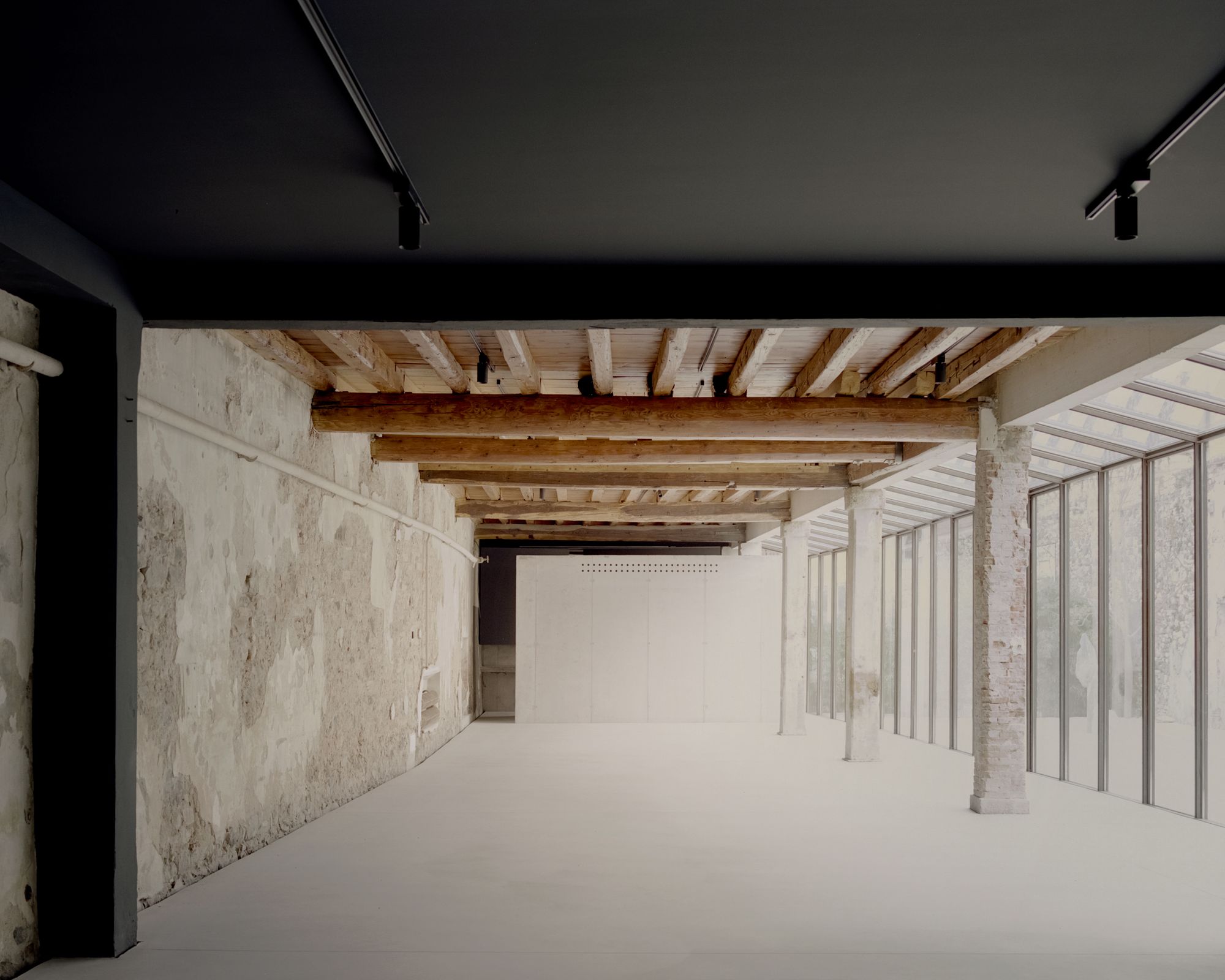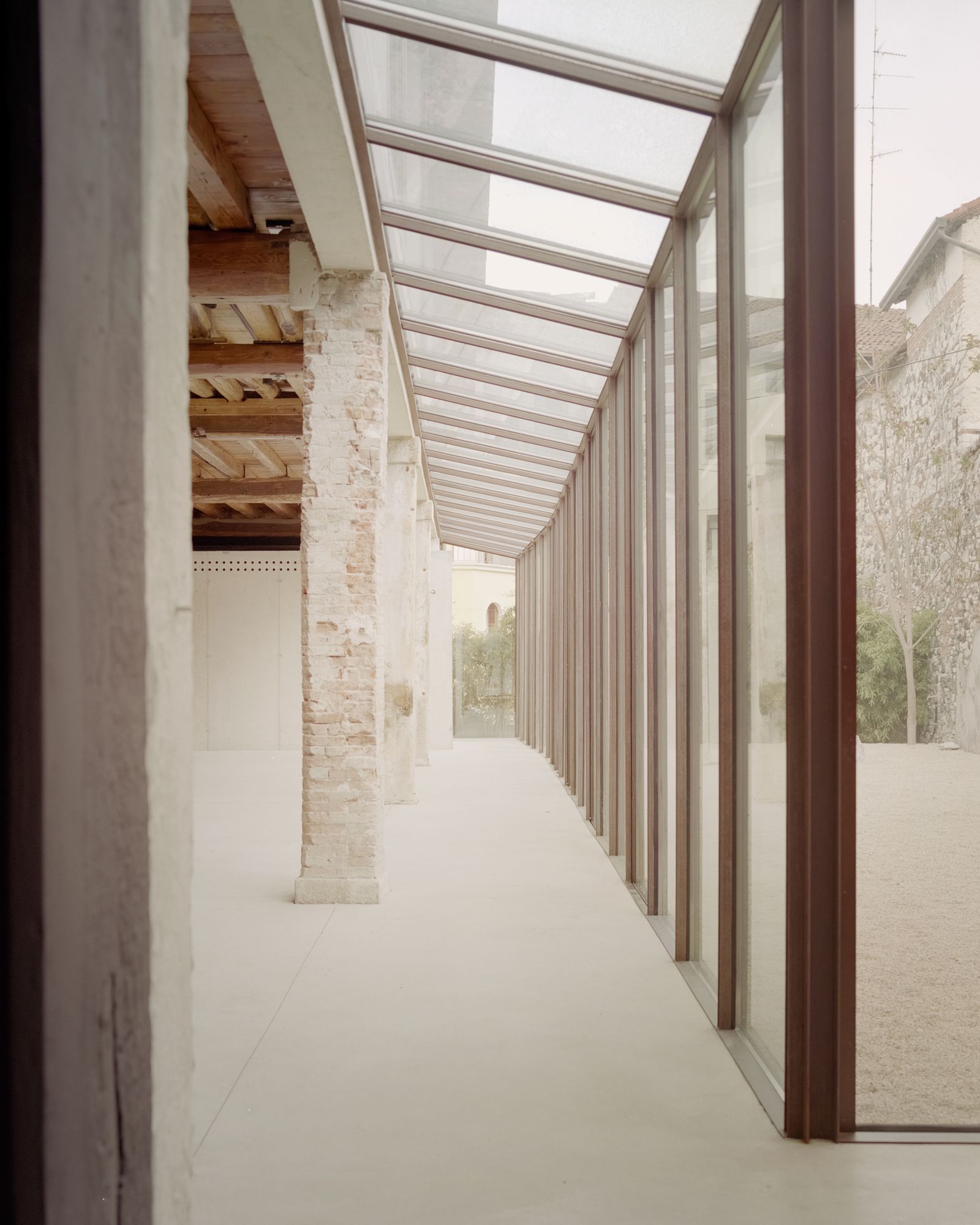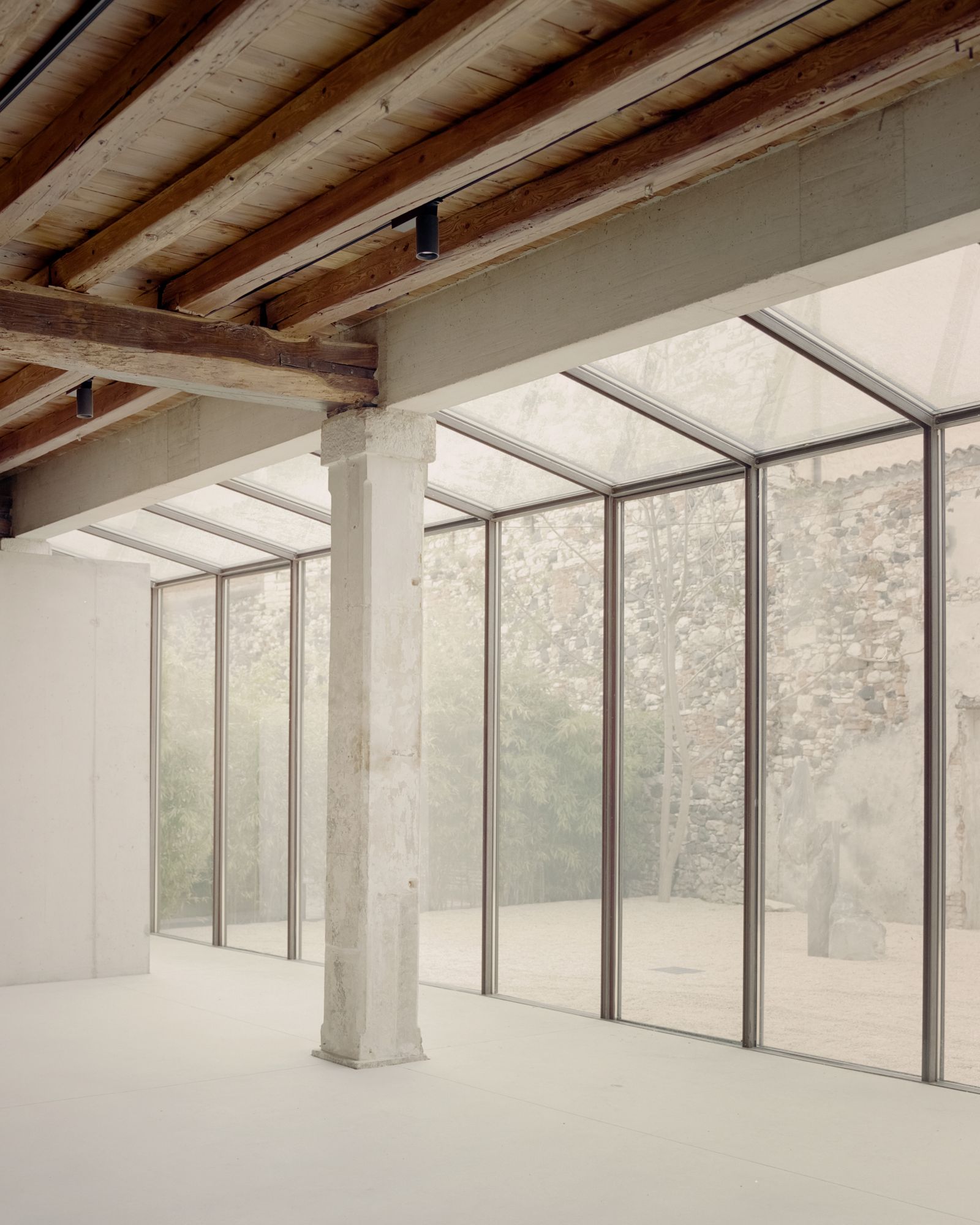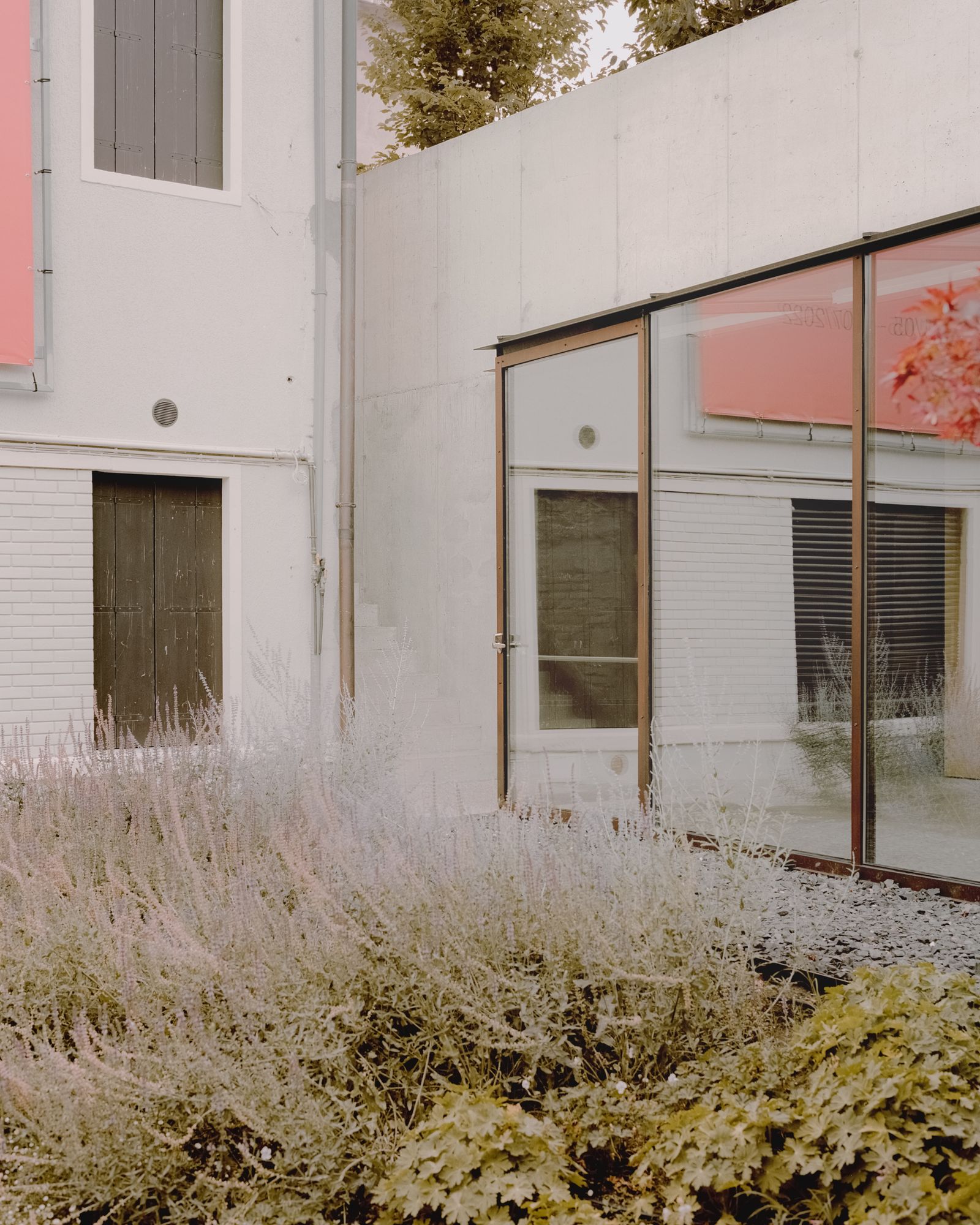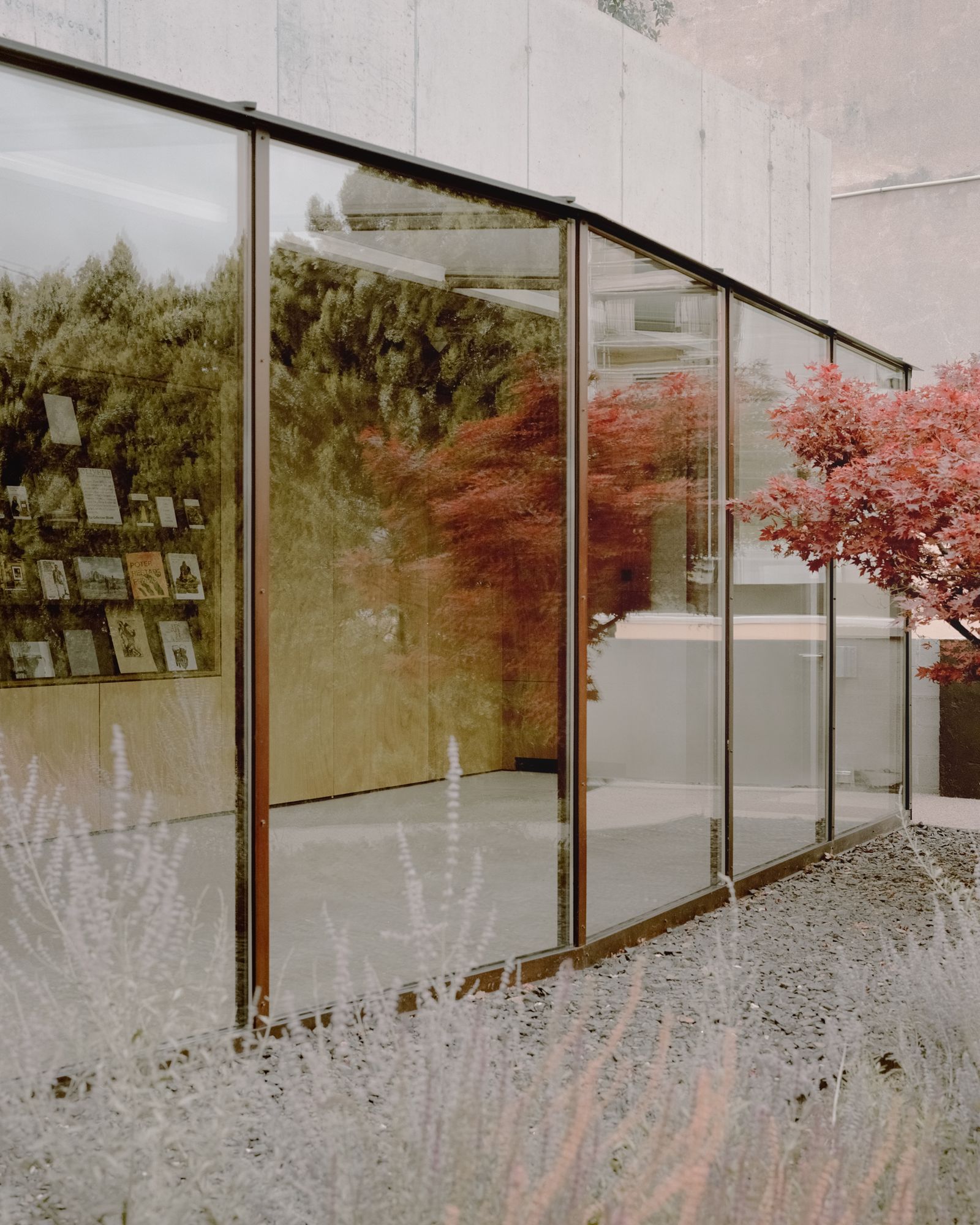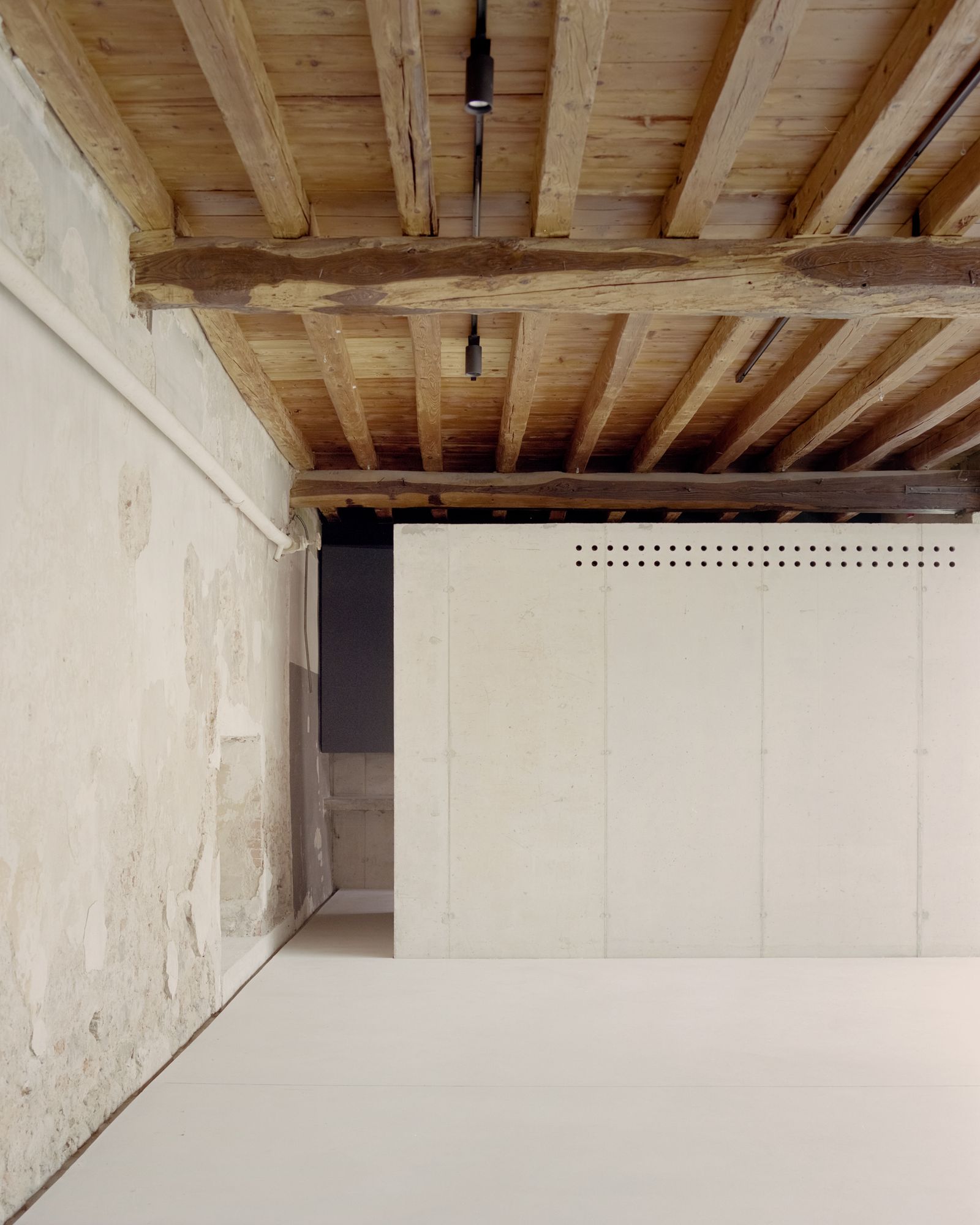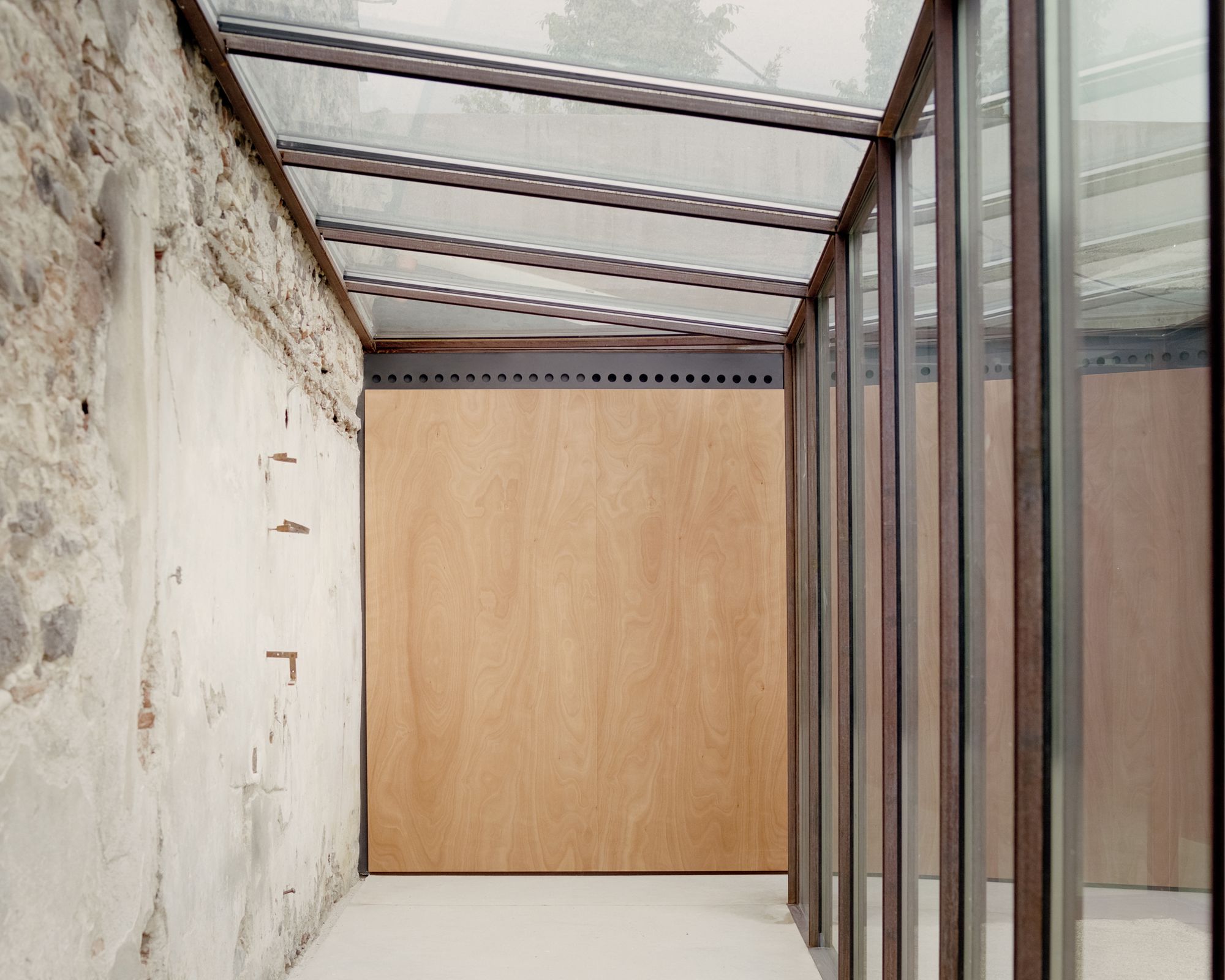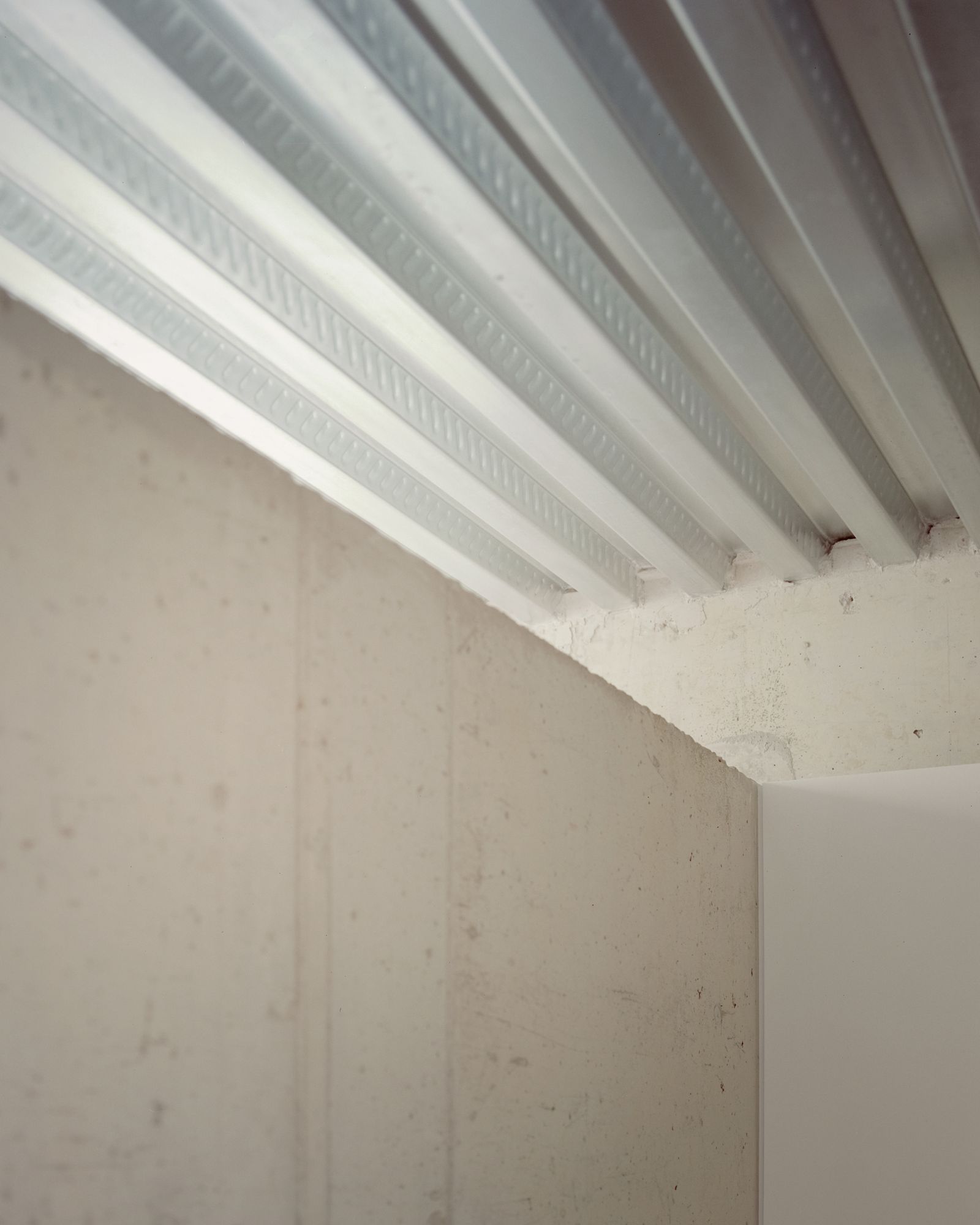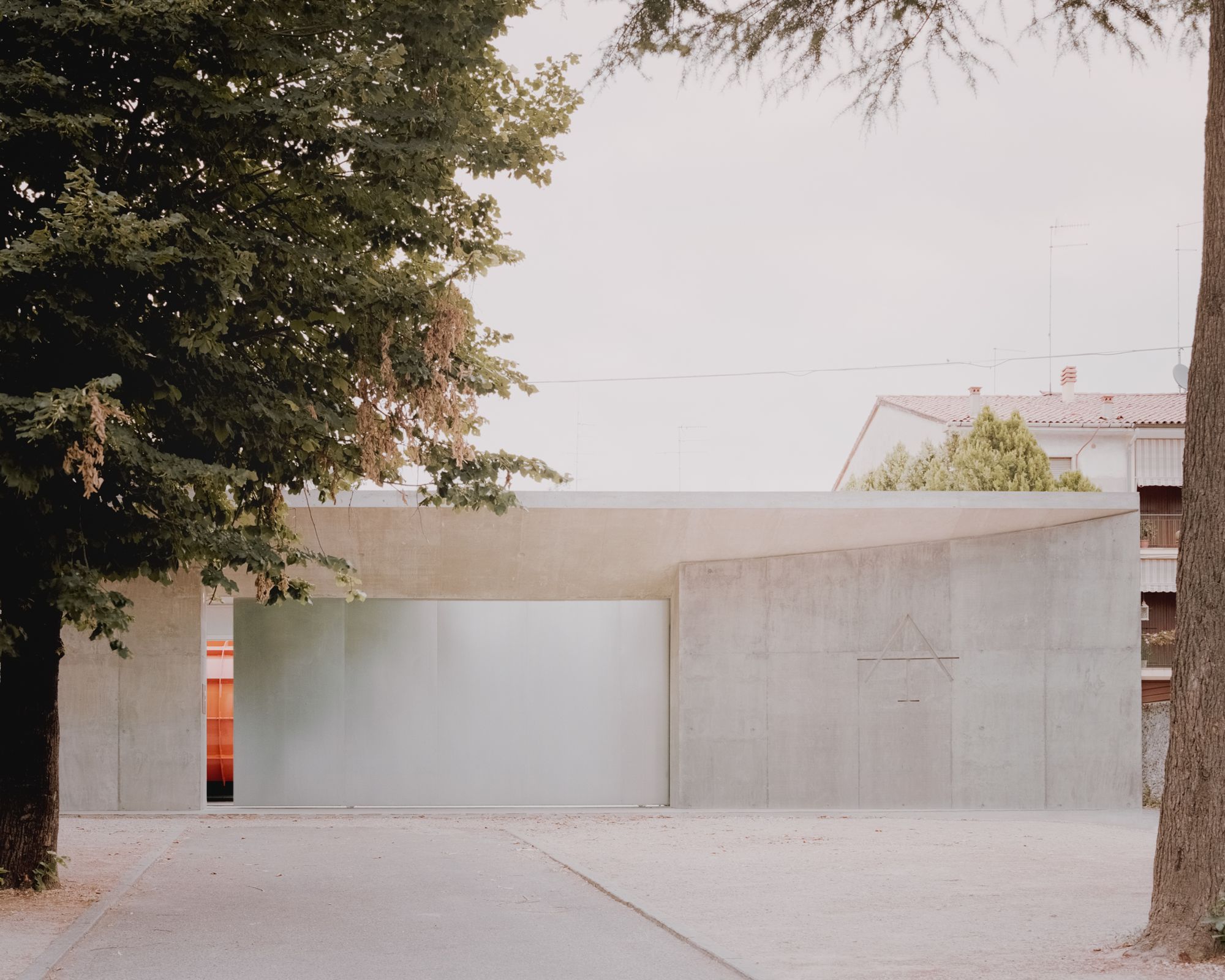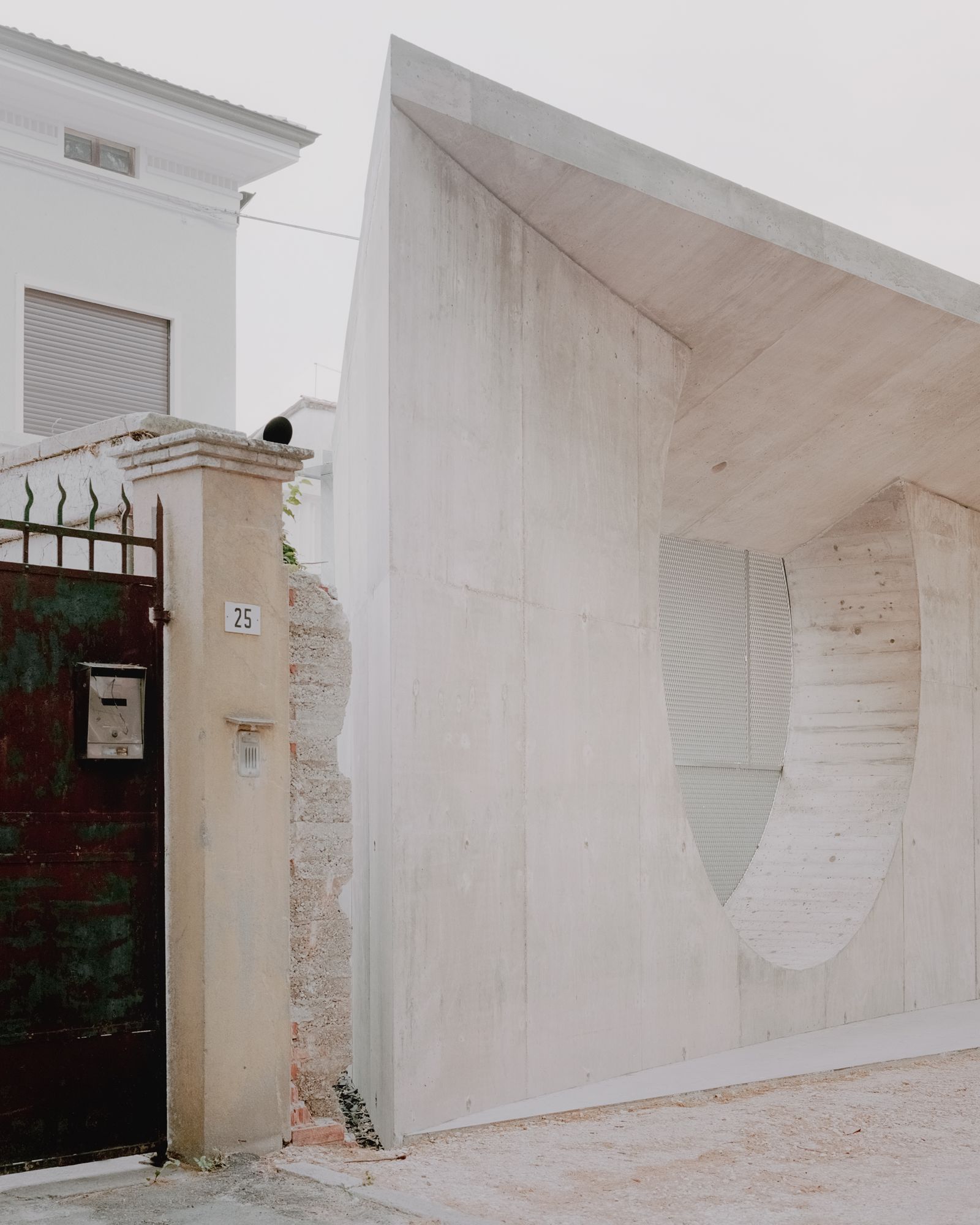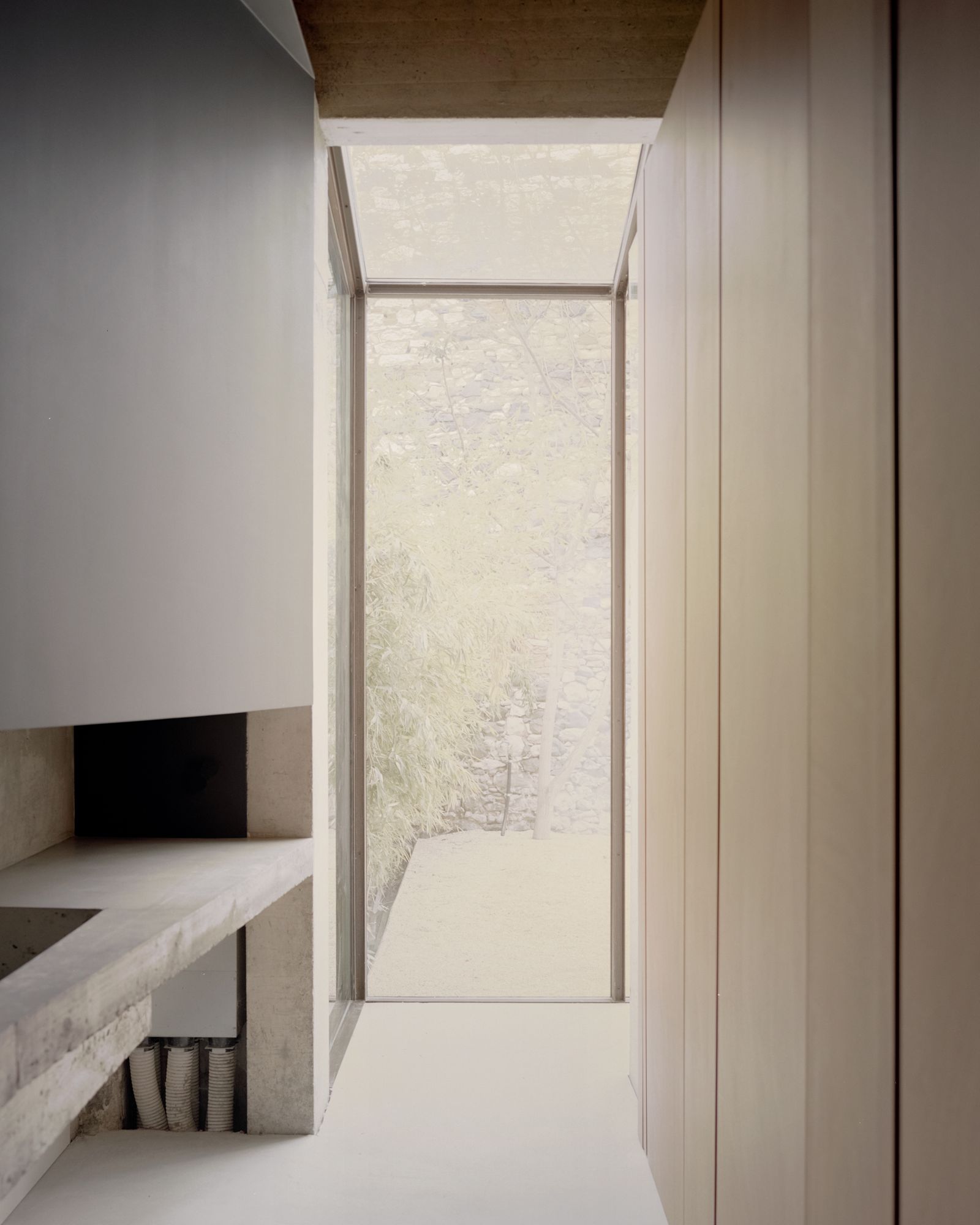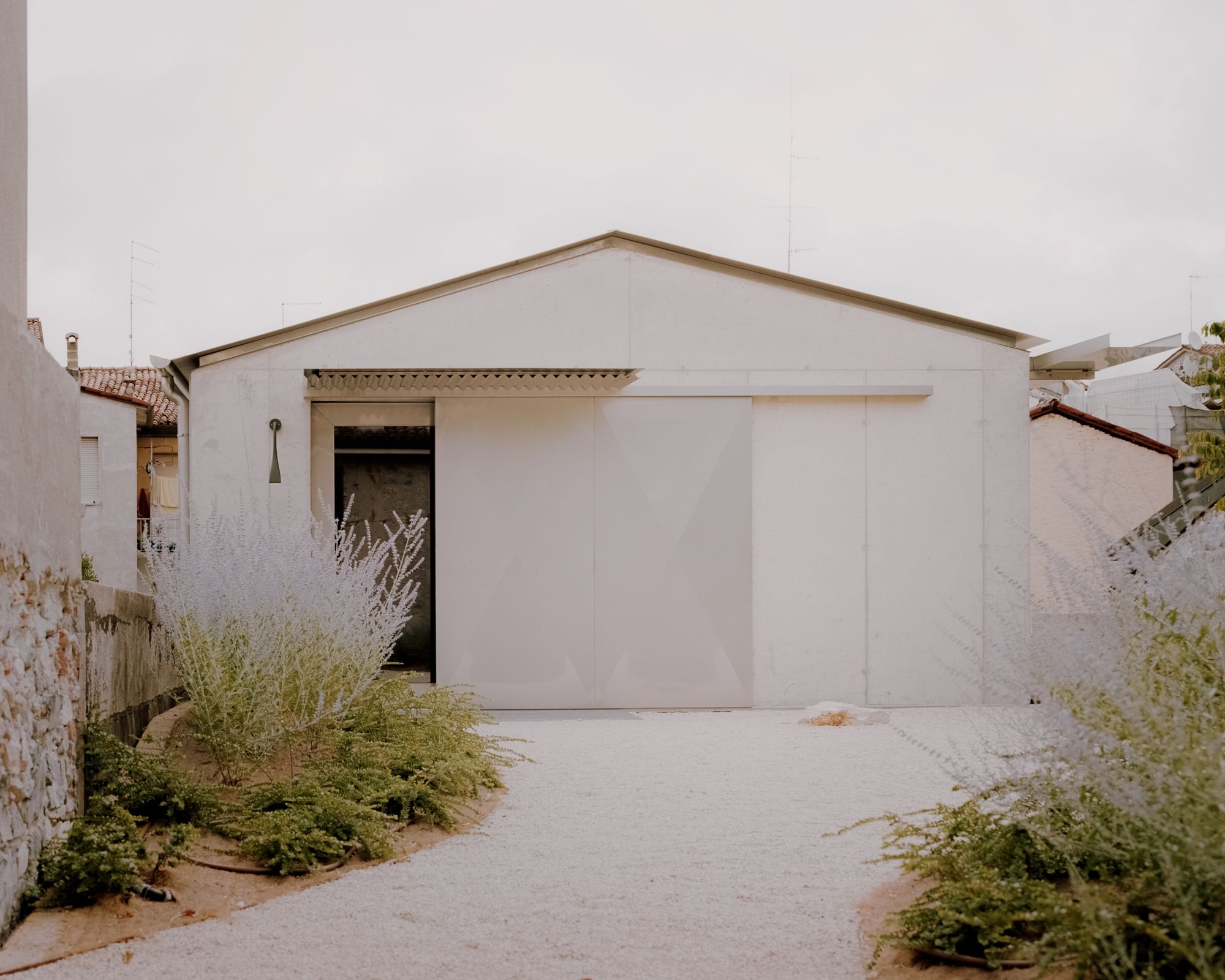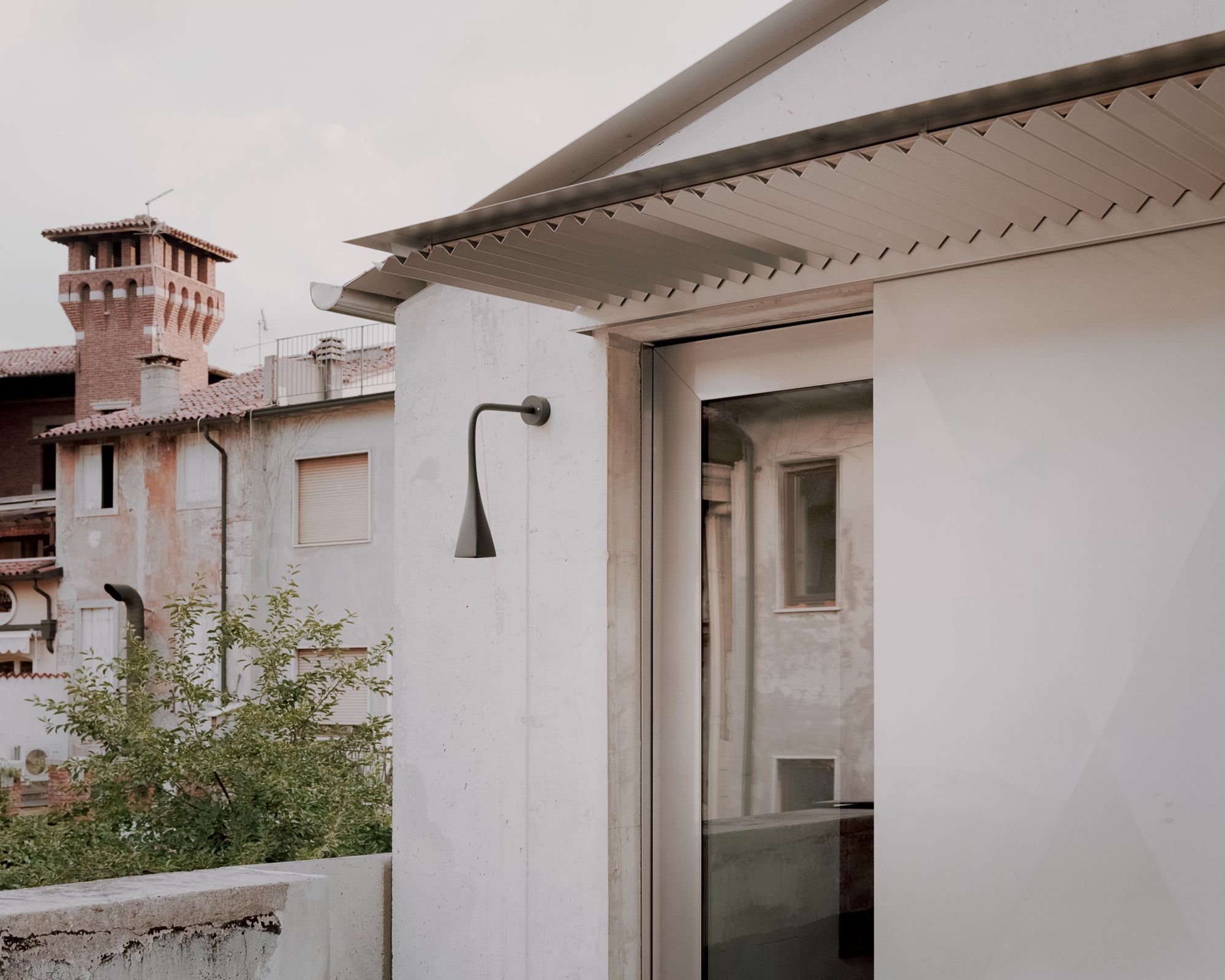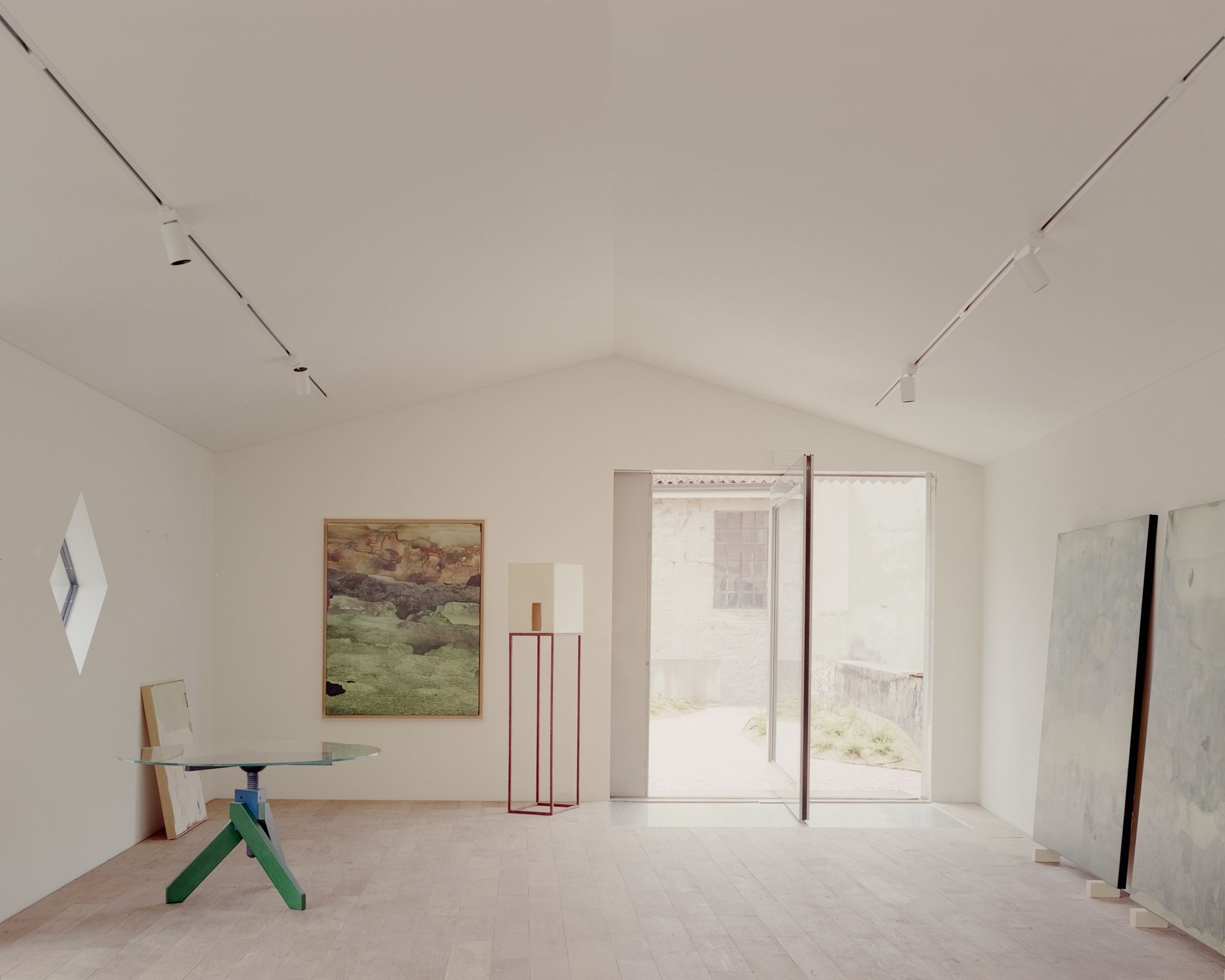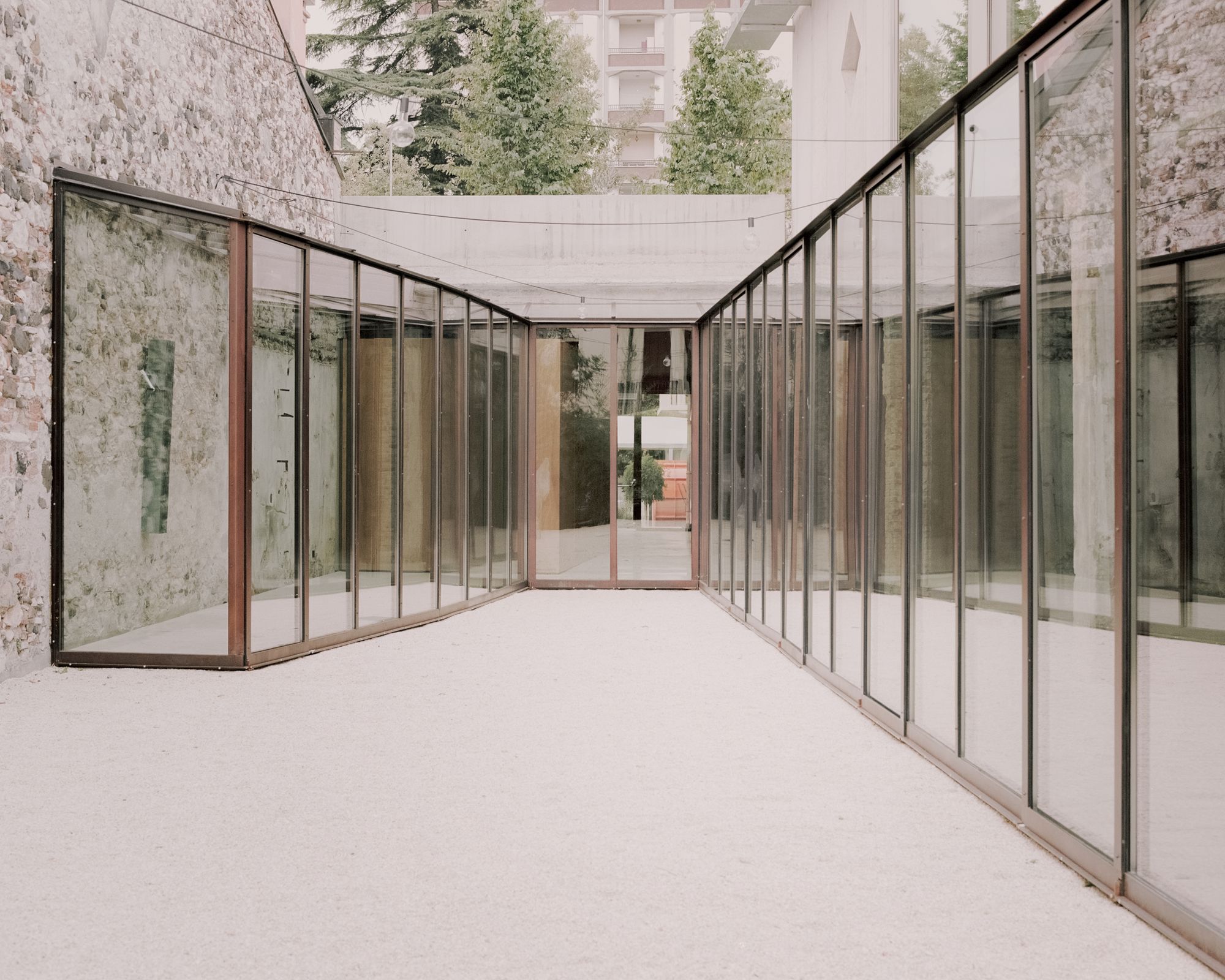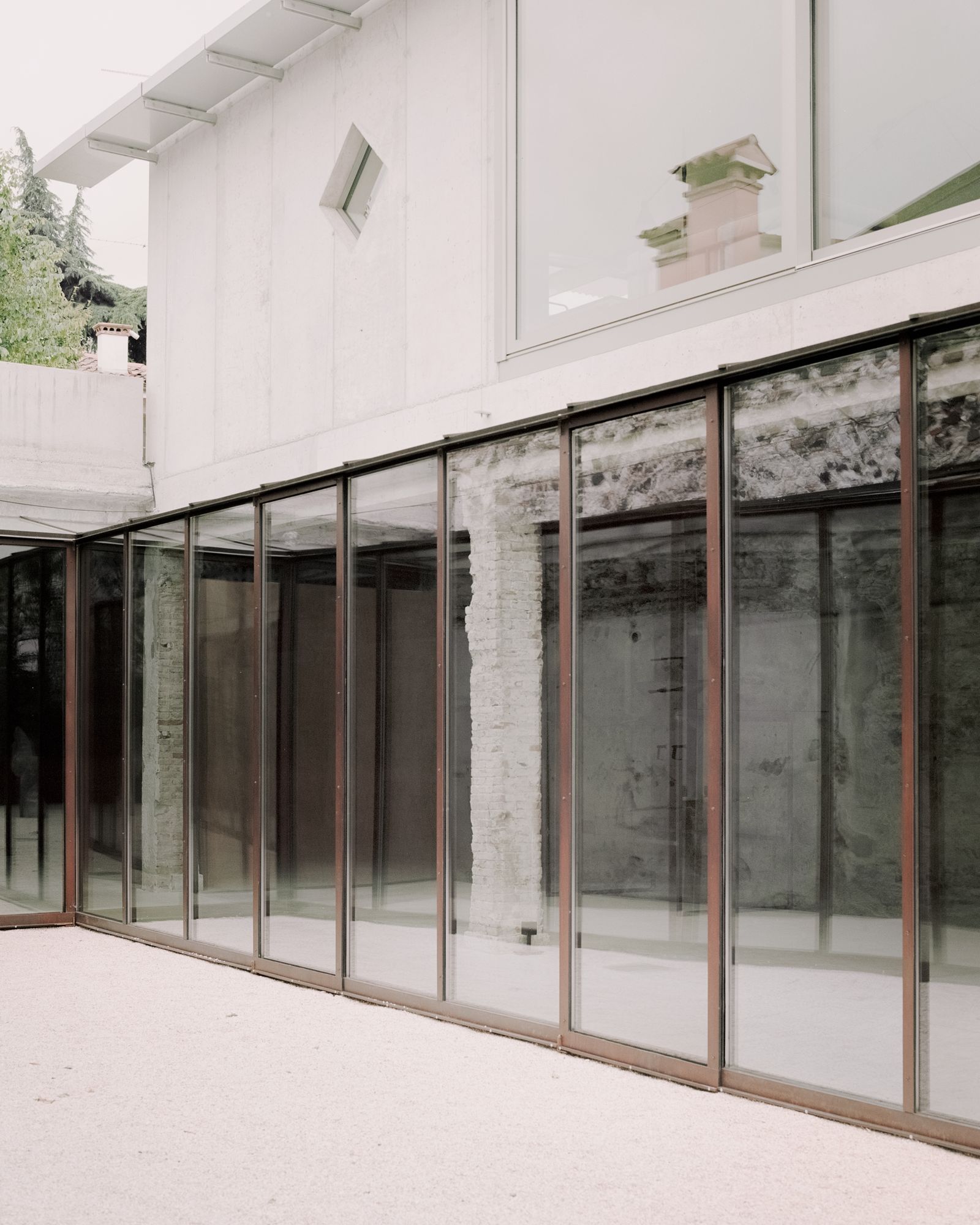Threshold and Treasure is a minimal space located in Arzignano, Italy, designed by AMAA. The purpose of “Threshold and Treasure” is to honor Mats Bergquist’s creative output. The entire project’s significance emerges precisely in the area of the threshold, making the entrance a dual function of an urban system and a work of art. It is a matter of volume: from the seat created inside, one can feel its concave shape, experience it, and judge its thickness, as in a frame reminiscent of Edward Hopper’s representations. Again, it is intended to be crossed in order to enter the first “secret” garden and a completely different realm by leaving behind the chaos caused by the immediate urban environment: an essential, oneiric peace that has been sought for just one purpose—to house art. The trail is laid out with the intention of gently guiding the visitor inside the exhibition area from the farthest side. The area is revealed gradually by passing over each threshold in a set order.
The route now passes the “black threshold,” a location marked by a 20th-century extension consisting of a reinforced concrete frame, whose presence is here highlighted by a “absolute black” covering. Due to a background that is conducive to experiencing art pieces in an inevitable dialogue with the existing building, this method focuses on the viewer’s visual perception by drawing attention to the layers while simultaneously calming the eye. The presence of a third threshold can be felt precisely by the visible original wall: the memory of what was once a typography and, before that, a barn, leads to the discovery of an entirely different spatiality, which is authentic because it has been spared from time additions. The contrast between the wooden slab and the discrete volume of reinforced concrete that surrounds the restrooms in the background attracts light.
A glass and steel cage that expands the area and reveals the internal court, almost as if it were a treasure, is revealed when the great hall’s longitudinal development completely opens up. The stairway leading to the higher floor can be identified by returning to the glass portion of the entrance. This presence indicates a design process that enabled the “detachment” of the Liberty building from the Twentieth-century expansion, which currently houses the artists’ temporary apartment. In that particular position, the stair transforms into a crucial component in the restructuring of the syntax of the numerous stratifications that demonstrate the passage of time. The division of the components (the villa and the warehouse) is a necessary break; the power of this separation is communicated by the unpolished façade, which is then softened by the connection offered by the new stair.
The sixth mechanism, a three-dimensional threshold, is produced by the concrete stair and beam and leads to a different treasure, the garden. This green area functions as a kind of “panopticon” from which it is possible to see a typical Venetian historic center while surrounded by trees. This point of interest is made up of a dubious combination of colors and styles that together create a contemporary tapestry. The environment is defined by the alternation of architectures without architects (to use Bernard Rudofsky’s phrase), which adds to the memory and tradition of the location and should be interpreted with pride as such. To enter the atelier, one more threshold must be crossed. A sizable natural steel sliding door reveals a second pivoting window, which, at last, provides access to a pure space.
The interior of the concrete volume, which is visible from the outside, is distinguished by a continuous white surface that contrasts with a wooden floor salvaged from a Borneo kindergarten and embellished with child-carved details that restore the building’s domestic character. The covering, in terms of geometry and materials, combines architectural features from the rural Venetian tradition with those typical of industrial structures. The volume contains a section devoted to the artists on display in the permanent collection. This section, in and of itself, reflects the poetic of the curator, Elena dal Molin, a modern patron who finds the core of her own work in experience, collaboration, and aesthetic inquiry—the ideal client for an architect. The ten-meter-long opening, which is framed by sliding window frames, allows one to see the goal to maintain a constant connection with the landscape from this vantage point. The artwork projects itself outward.
The “panopticon” captures the visitor as they follow the route back, and with a 360° rotation, they can see the impressive hand-crafted gutter that collects water and directs it toward the garden. On the ground floor, the garden and its winding path can be found once more; even the exit is a discovery. At this point, a few more details become apparent, such as the bench’s invitation to the visitor to stay a little longer and reflect on their experience before running into the essential mechanism, “Threshold and Treasure,” once more and departing from the strange ancestral dimension that the project has staged through the collaboration of art, memory, and place. Through the threshold, a space is revealed where a variety of forces focus in a fact of preserved culture that projects itself towards the only possible measure: the infinite. These forces are guided by imagination, emotions, and freely experienced matter.
Photography by Simone Bossi
